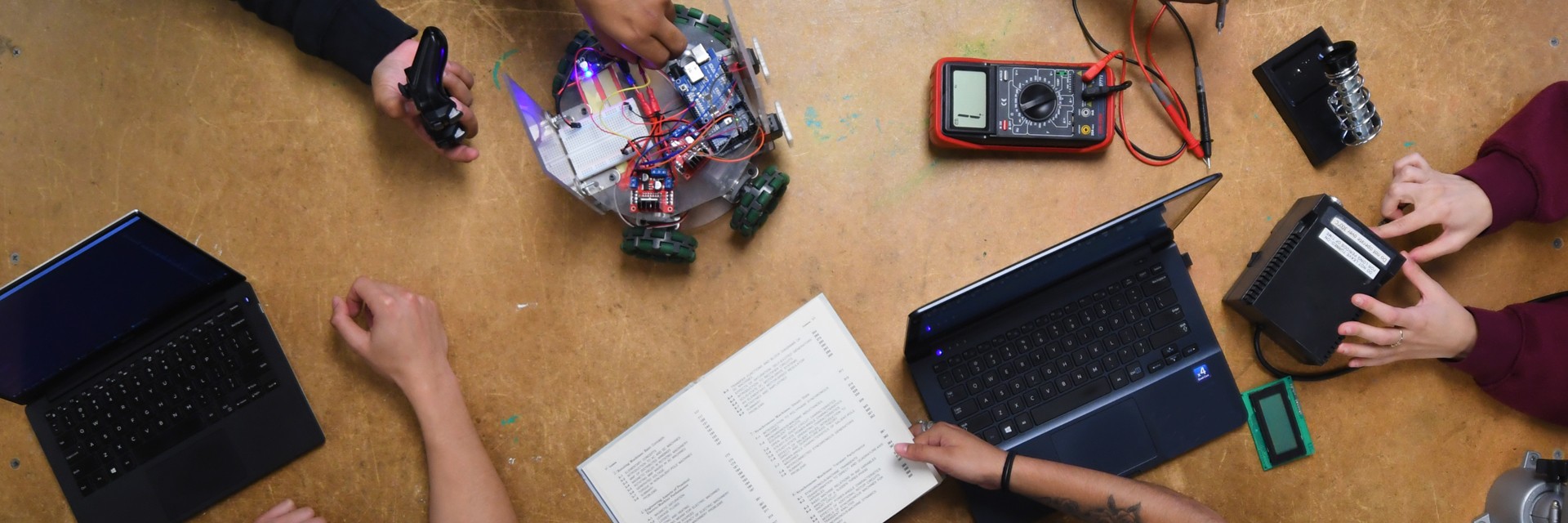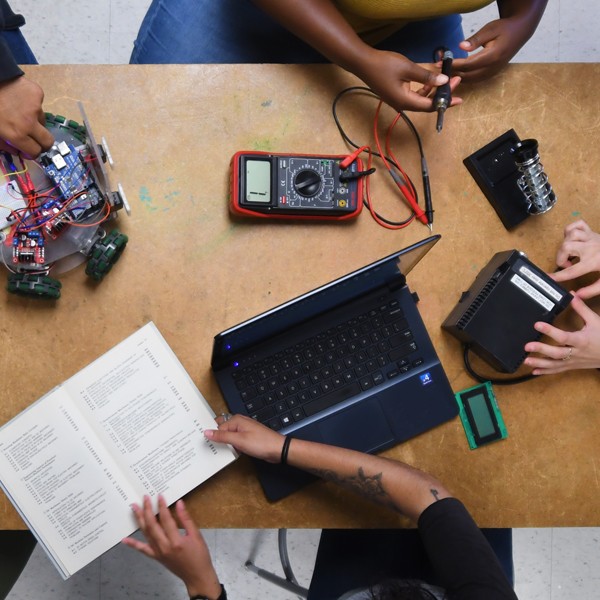The Solar Eagle and Solar Eagle II made history in California, and brought significant prestige to and interest in the School of Engineering and Technology at California State University, Los Angeles. These projects became showcase pieces and brought recognition to the school and to the University. More than a half million people have seen at least one of the cars, either at educational tours across Los Angeles or, in the case of Solar Eagle I, at the Petersen Automotive Muesum. The project engendered unprecedented enthusiasm and pride all across the Cal State L.A. campus community. These projects provided the more than sixty Solar Eagle and Solar Eagle II team members with the educational experience of a lifetime. Furthermore, the projects played important roles in raising public consciousness of the need for environmentally clean transportation systems.
In 1990, Cal State L.A. 's first solar-powered electric car, the Solar Eagle, placed fourth of the thirty-two entries in the GM Sunrayce USA , ahead of entries from many of the most prestigious universities in the nation, including MIT and Stanford. It finished first among the five California entries. The Solar Eagle vehicle received the U.S. Department of Energy first place cash award for "Best Artistic Design" based on both aesthetics and workmanship. In the 1990 World Solar Challenge race across Australia, the Solar Eagle placed in the top ten in the world, even though it competed against cars built by multinational corporations. These include such giants as Honda, Nissan, and Swatch. The car went on to win the Arizona Governor's Cup Solar Car Race held as part of the Phoenix Formula I Grand Prix in March, 1991.
In 1993, Cal State L.A. 's second Solar-powered car, the Solar Eagle II, won the regional qualifying event and started in pole position in the Sunrayce '93. An unfortunate electrical system failure on the first day took the car out of contention for first place. After recifying the electrical problem, the Solar Eagle II went on to win more first place daily finishes than any other entry.At the end of the race, Solar Eagle II finished in third place of the thirty-two car field. In November, 1993, the team traveled to Australia to compete in the 1993 World Solar Challenge. The Solar Eagle II finished thirteenth in the fifty-four car field. The vehicle averaged 37 mph, driving daily from 8:00 a.m. to 5:00 p.m., bettering the Solar Eagle's 1990 speed by over 10 mph.
The Solar Eagle and Solar Eagle II continue to bring credit and recognition to Cal State L.A. The Solar Eagle has been on display at L.A.'s Petersen Automotive Museum, since it's opening in June, 1994. The award winning video, "The Flight of the Solar Eagle", which chonicles the process of designing, building, and racing the Solar Eagle, continues to be widely distributed. The Solar Eagle II is highly sought after for display in the community.
The School of Engineering and Technology at Cal State L.A. has developed a reputation for excellence in designing, building, and racing solar-powered electric vehicles. We learned an enormous amount in the process of building Solar Eagle and Solar Eagle II which are putting into the design and fabrication of the Solar Eagle III. We have the knowledge, expertise and enthusiasm to pull it all together and bring home a first place victory with the Solar Eagle III.




